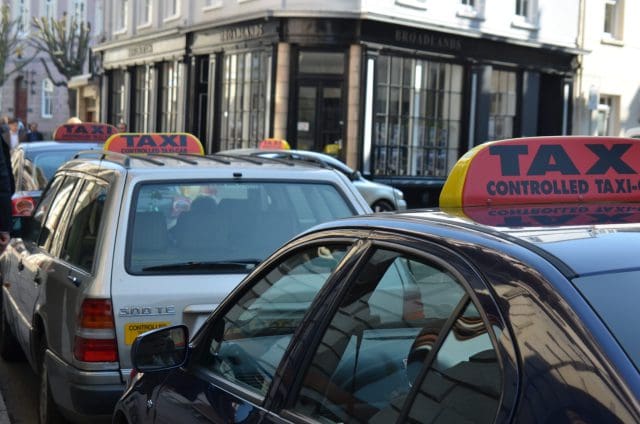We often hear advice about how taxi drivers can reduce their taxi insurance premiums, but when it comes to taxi fleet insurance, a different approach is needed to make savings.
Insurance companies calculate taxi insurance premiums based on risk and how likely it is they will have to pay out in the event of a claim. As a general rule, the greater the risk, the higher the premium is likely to be.
Higher risk
Because taxi drivers spend more time on the road than people using their cars for social or domestic use, they are classed as higher risk. Added to this, taxi drivers are likely to be operating in towns and city centres at busy times, which further increases the risk.
Having a clean driving licence and claims history is one way to help reduce taxi insurance premiums. Another is to have dash-cams and telematics devices fitted to taxis and PHVs which will provide evidence of who is at fault in the event of a crash.
But when it comes to taxi fleets – which usually involve companies with three or more vehicles – it is more difficult to calculate the risk with different drivers being insured to drive different vehicles at various times and locations.
Managing the risks
This is why it is important for taxi fleet operators to show insurers that they have robust risk management policies in place to minimise the likelihood of a claim.
This could be installing CCTV cameras inside every vehicle in the fleet to protect both the driver and passengers in the event of a crash or incident which leads to a claim. As well as CCTV, by installing front and rear dash-cams, operators have real-time evidence of what happened in the event of a crash. It is also acknowledged that drivers who know they are being recorded are more likely to drive safely.
Another piece of technology that can help reduce insurance premiums is telematic boxes, which record information such as a vehicle’s speed, braking, location, etc, all of which can be used as evidence in the event of a claim, as well as demonstrating a pattern of driving which could lead to premiums being altered to reflect the risk.
Driving record
One of the best indicators of how someone drives is their claims history. A driver with no claims on their policy is more likely to enjoy savings on their insurance premiums than someone who has a history of crashes and claims against them. This is why many taxi fleet operators insist on drivers having clean licences and a history of no or minimal claims, in order to keep premiums down.
A poor driving record will make an insurer think the driver poses a greater risk of being involved in further claims and this will lead to the cost of their taxi insurance going up. And for a fleet, if one driver is deemed higher risk, the cost of the entire fleet policy could increase.
Similarly, someone with motoring convictions – as long as they are not serious enough to lead to a taxi licence being revoked – such as speeding convictions could cause fleet insurance premiums to go up.
Extra steps
In addition to recruiting safe drivers and showing a taxi insurer that an operator is taking precautions to manage risks, they may also reduce their premiums by having a voluntary policy excess. This means that in the event of a claim they would have to pay more towards the cost of repairs as a one off, which would be cheaper than paying higher monthly premiums.
As with clean driving records, taxi fleet operators who employ more experienced drivers can hope to make savings on their policies. Many will impose a minimum age limit of 30 instead of 25, which usually means they have more experience as the wheel, and the risk of making a claim is lower.
Whatever other steps an operator takes, one of the best ways to make savings on taxi fleet insurance is to go through a specialist taxi fleet insurance brokers who will help find the right level of cover for the best price.




